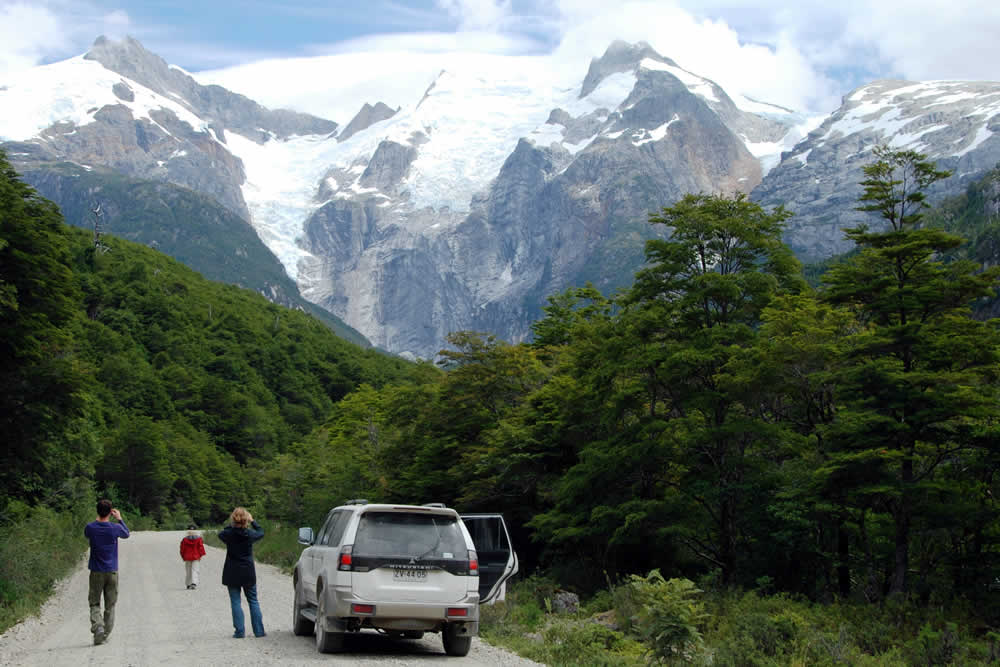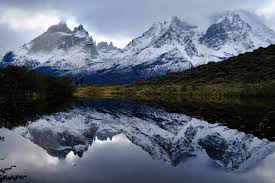Patagonia, a region shared by Argentina and Chile at the southern tip of South America, is synonymous with dramatic landscapes, rugged mount
Patagonia, a region shared by Argentina and Chile at the southern tip of South America, is synonymous with dramatic landscapes, rugged mountains, vast glaciers, and untamed wilderness. This unique destination draws adventurers, nature lovers, and photographers from around the globe, offering an experience that combines breathtaking beauty with a sense of solitude.
Beyond its natural wonders, Patagonia is rich in culture, wildlife, and environmental significance. From exploring the towering peaks of Torres del Paine to trekking through the Perito Moreno Glacier, Patagonia captivates the imagination and inspires adventure.
Geography and Landscape of Patagonia

Patagonia spans over 1,000,000 square kilometers, encompassing diverse terrains. The geography can be broadly divided into two main zones:
1. The Andes Mountains
- Stretch along the western edge of Patagonia.
- Home to iconic peaks such as Mount Fitz Roy and Cerro Torre.
- Glaciers like Grey Glacier and the Southern Patagonian Ice Field are major attractions.
2. The Patagonian Steppe
- Vast semi-arid plains covering much of eastern Patagonia.
- Characterized by grasslands, wind-swept plateaus, and unique wildlife.
- Less visited but offers solitude and an authentic sense of wilderness.
Patagonia’s geography makes it ideal for a wide range of outdoor activities, including trekking, kayaking, climbing, and wildlife observation.
Wildlife in Patagonia
Patagonia is home to diverse species, many of which are unique to the region. Some notable wildlife includes:
- Guanacos: Close relatives of llamas, often seen roaming the steppe.
- Andean Condor: One of the largest flying birds in the world, soaring over cliffs.
- Pumas: Elusive predators inhabiting the Andes.
- Magellanic Penguins: Nest along coastal areas, particularly in Punta Tombo.
- Huemul Deer: Endangered species that inhabit the forests and valleys.
The region’s biodiversity is a major draw for ecotourists and wildlife photographers.
Popular Destinations in Patagonia
1. Torres del Paine National Park (Chile)
- Famous for its granite towers, turquoise lakes, and glaciers.
- Offers trekking circuits such as the W Trek and the O Circuit.
- Wildlife viewing includes guanacos, foxes, and condors.
2. Los Glaciares National Park (Argentina)
- Home to the Perito Moreno Glacier, one of the few advancing glaciers in the world.
- Visitors can experience ice trekking, boat tours, and scenic viewpoints.
- The park also includes Mount Fitz Roy, attracting climbers and photographers.
3. Tierra del Fuego
- Known as the “Land of Fire,” this southern archipelago offers remote landscapes and unique flora and fauna.
- Ushuaia, the southernmost city in the world, serves as a gateway to Antarctic cruises.
4. Peninsula Valdés
- A UNESCO World Heritage Site known for marine wildlife.
- Offers whale watching, sea lion colonies, and Magellanic penguins.
Activities and Adventure in Patagonia
Patagonia is a paradise for outdoor enthusiasts. Popular activities include:
1. Trekking and Hiking
- Trails cater to all levels, from easy walks to multi-day treks.
- Highlights include the W Trek, Cerro Fitz Roy, and Huemul Circuit.
2. Glacier Exploration
- Ice trekking and boat tours allow close-up experiences with massive glaciers like Perito Moreno and Grey Glacier.
3. Wildlife Watching
- From pumas to penguins, Patagonia offers unique opportunities for observing rare and endangered species in their natural habitats.
4. Kayaking and Rafting
- Rivers and fjords provide opportunities for paddling amidst spectacular scenery.
5. Climbing and Mountaineering
- Peaks like Cerro Torre challenge experienced climbers seeking adventure and stunning vistas.
6. Photography
- Landscapes, wildlife, and dramatic skies make Patagonia a top destination for nature photographers.
Climate and Best Time to Visit
Patagonia’s climate is unpredictable and varies by region:
- Summer (December to February): Warmest months, ideal for trekking and outdoor activities.
- Spring and Autumn (October–November, March–April): Cooler temperatures, fewer tourists, excellent for photography.
- Winter (June–August): Snowy conditions in the Andes, suitable for skiing and remote adventures.
Visitors should be prepared for wind, sudden temperature changes, and variable weather at any time of year.
Culture and Local Communities
Despite its wild reputation, Patagonia has a rich cultural heritage:
- Indigenous Groups: The Mapuche, Tehuelche, and Selk’nam peoples contributed to the region’s history and traditions.
- Ranching and Sheep Farming: The Patagonian steppe is dotted with estancias (ranches), offering insights into rural life.
- Local Cuisine: Patagonian lamb, king crab, and fresh trout are regional specialties.
- Art and Festivals: Cultural festivals and local artisan markets showcase traditional crafts and music.
Exploring local communities provides a deeper understanding of Patagonia beyond its natural landscapes.
Conservation and Sustainability
Patagonia’s ecosystems are fragile, and conservation is critical:
- National Parks: Protected areas like Torres del Paine and Los Glaciares preserve biodiversity and natural beauty.
- Eco-Tourism: Sustainable travel practices, including low-impact trekking and responsible wildlife observation, are encouraged.
- Environmental Advocacy: Organizations like Patagonia (the company) support conservation initiatives, environmental activism, and sustainable tourism practices.
Visitors are encouraged to respect local regulations and minimize their environmental footprint.
Travel Tips for Visiting Patagonia
- Plan Ahead: Distances are vast; accommodations and tours should be booked in advance.
- Pack for All Weather: Layered clothing, waterproof gear, and sturdy footwear are essential.
- Transportation: Renting a car or joining guided tours is often necessary to access remote areas.
- Safety First: Prepare for rugged terrain, strong winds, and rapid weather changes.
- Respect Nature: Stay on trails, avoid disturbing wildlife, and follow park rules.
Why Patagonia Is a Must-Visit Destination
Patagonia offers a rare combination of adventure, natural beauty, and solitude. From towering peaks and advancing glaciers to unique wildlife and cultural experiences, it provides opportunities that few other destinations can match. For travelers seeking to connect with nature, challenge themselves physically, or simply experience awe-inspiring landscapes, Patagonia is unforgettable.
Conclusion
Patagonia is a land of extremes and contrasts—majestic mountains, endless plains, icy glaciers, and remote wilderness. Its unique landscapes, diverse wildlife, and vibrant culture make it one of the most remarkable destinations on Earth.
Whether exploring Patagonia through trekking, glacier tours, wildlife watching, or cultural immersion, every visitor leaves with a deeper appreciation for nature, adventure, and the incredible resilience of life in this remote region. For those seeking a journey that combines awe, challenge, and inspiration, Patagonia is an unparalleled experience.


COMMENTS